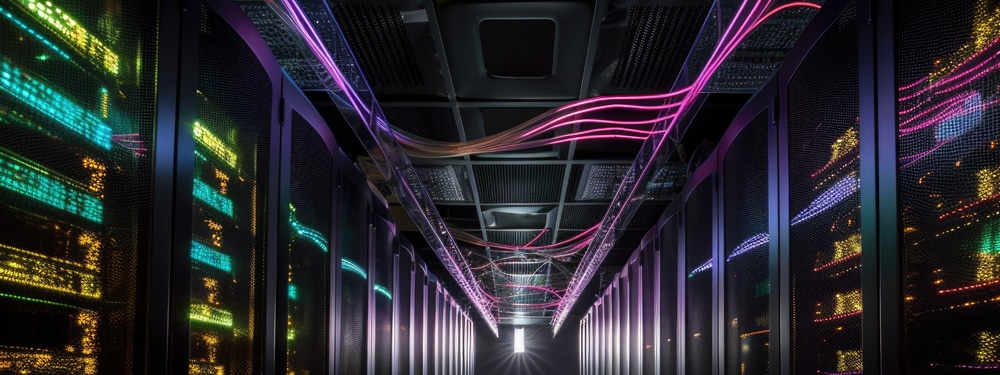Article Featured in Networks Europe Magazine
By: Andy Connor, Director – EMEA Channel
The data center industry faces potentially opposing challenges over the next few years, so optimizing data center performance has never been more important. In order to achieve this, at Subzero Engineering, we believe a number of things have to happen.
The data center industry faces potentially opposing challenges over the next few years. On the one hand, the demands of our digital age show no sign of stopping, and with 5G expected to reach mainstream adoption, one could reasonably argue that the digital infrastructure required to support such applications is going to increase significantly. What’s clear is that it needs to be agile, scalable, quick-to-deploy, and, above all, efficient, if it is to meet the users’ expectations.
At the same time the data center industry, as a major power consumer, must become more sustainable, and move forward from the easy wins of carbon offsetting to a much more sophisticated programme of carbon reduction and eventual elimination – Net Zero.
Set against these twin objectives, optimising data center performance has never been more important, and in order to achieve this, at Subzero Engineering, we believe a number of things have to happen:
Data drives decision-making
Cliché or not, the saying that ‘if you can’t measure it, you can’t manage or improve it’ remains true. For data center owners and operators, this means understanding either how your existing facility performs under varying environmental conditions and identifying ways to improve it. This may mean major modernizations work will need to take place where efficiencies are lacking. Or designing a new facility, which offers the layout, optimum flexibility and environmental performance to meet the constantly changing requirements of digital customers alongside sustainability targets.
Computational Fluid Dynamics (CFD) software will play an increasingly important role when it comes to data center design and construction, retrofit and helping to improve the efficiency and performance of legacy data centers. It allows the simulation of an endless combination of racks, cabinets, cabling and mechanical and engineering (M&E) equipment, with the anticipated IT load, to ensure optimization. In providing data-driven analysis of the cold and hot air within the data center, CFD analysis also delivers optimized layout recommendations and highlights how energy costs can be reduced by optimising and maximising cooling usage throughout the data center. Such an Environmental Impact Evaluation provides valuable information to help operators reduce energy usage and carbon emissions and will play a critical role in meeting Net Zero data centers.
Modernization is critical
Armed with the data, it’s time for action. And this is where I believe that data center containment solutions can play a critical role – especially as data center owners/operators look to improve both the IT and environmental performance of new and legacy facilities. The benefits are many, and both hot and cold aisle containment solutions optimize the interaction of the cold supply and hot exhaust air within the data center. This eliminates hot spots and significantly reduces the prospect of equipment failure. It also applies to the M&E and the IT hardware, both of which might otherwise be challenged to cope with extreme, unregulated temperatures. Improved reliability is a prerequisite for today’s digital applications.
A new kind of micro data center will emerge, that is truly vendor agnostic, with the user’s choice of data center components
Once installed, containment solutions provide major environmental benefits, including higher cooling supply temperatures, lower CRAC fan speeds, a lower carbon footprint and a lower PUE. Another key containment outcome is significantly reduced energy usage, hence a smaller energy bill. Combined with an energy management and monitoring programme, containment solutions also allow operators to extend the lifecycle of their systems, which is a major sustainability win.
Greater flexibility at the edge
The edge infrastructure market is predicted to surge over the next two years, but today is dominated by small-scale micro data centers which are often pre-populated, single rack solutions. This can mean little flexibility in terms of their make-up, size or ability to scale up a single system in a modular manner and that the key needs of our digital age – flexibility, agility, scalability, speed – may not be met.
We believe that a new kind of micro data center will gain momentum in the coming months, one that can be truly vendor agnostic, and designed with the user’s choice of data center components (power, cooling, racks, cabling, safety systems). Such systems can be provided as standardized, but highly flexible or fully customized solutions, enabling the user to define their edge based on the business requirements. Furthermore, they can offer a 20-30 percent cost saving when compared to a fully containerized micro data center.
As we look towards Net Zero, sustainability and performance demands must be met. It requires greater flexibility in our infrastructure and a data driven approach to design and deployment.




